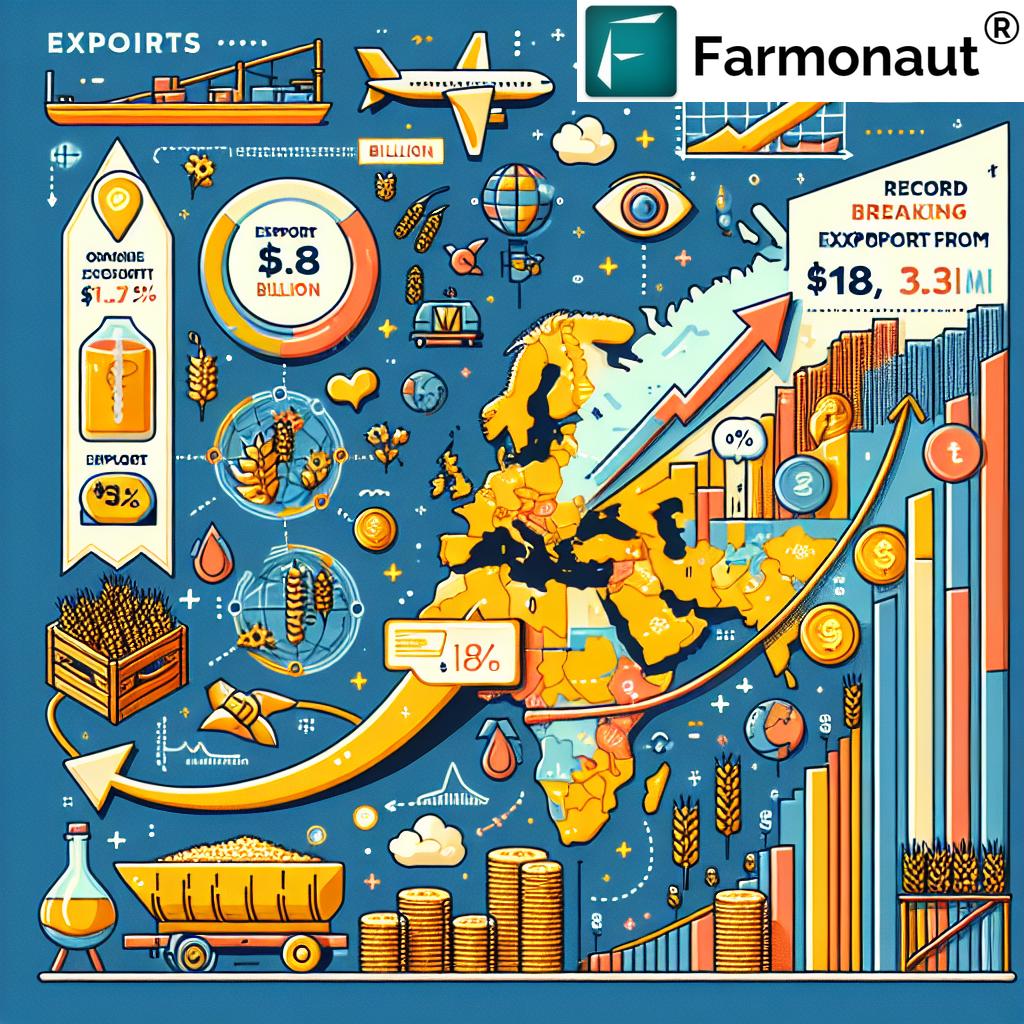Unleash the Power: Ammonia Market Soars to $91.95 Billion by 2029 with Asia Pacific Leading Growth
In a groundbreaking development for the global chemical industry, the ammonia market is set to experience remarkable growth, reaching a staggering $91.95 billion by 2029. This surge represents a compound annual growth rate (CAGR) of 3.0% from 2024 to 2029, according to a recent study by MarketsandMarkets. The forecast paints a picture of a robust and dynamic market, with the Asia Pacific region emerging as the powerhouse driving this expansion.

The Driving Forces Behind Ammonia Market Growth
Several key factors are propelling the ammonia market growth forecast:
- Increasing demand from various end-user segments, particularly in agriculture
- Growing use of ammonia in the textile industry
- Rising popularity of low-carbon solutions
- Diversification of ammonia applications through the Haber-Bosch process
The versatility of ammonia as a chemical compound has made it indispensable across multiple industries. Its role in agriculture, particularly in fertilizer production, remains a cornerstone of the market’s growth.
Anhydrous Ammonia: The Fastest-Growing Segment
Within the ammonia market, the anhydrous segment is projected to grow at the fastest rate during the forecast period. This growth can be attributed to several factors:
- Cost-effectiveness
- Direct application to soil
- Preference among farmers for large-scale agricultural enterprises
- Increasing demand in industrial applications
- Growing interest as a clean energy fuel
The anhydrous ammonia applications in agriculture are particularly noteworthy, as farmers seek efficient and effective ways to boost crop yields to meet the growing global food demand.
Direct Sales Channel Gains Prominence
In terms of sales channels, the direct segment is expected to play a significant role in the ammonia market. Large-scale customers, including industrial buyers and farmers, are increasingly preferring direct sales for several reasons:
- Ensures steady, large-scale ammonia supply
- Offers competitive rates
- Promotes operational efficiency
- Allows for higher customization
- Ensures higher-quality products
- Enables prompt delivery
This trend towards direct sales is reshaping the market dynamics and fostering closer relationships between producers and consumers.
Agriculture: The Dominant End-Use Industry
Among the various end-use industries, agriculture is expected to dominate the ammonia market during the forecast period. This dominance can be attributed to several factors:
- Growing global population driving demand for effective farming methods
- Increased need for fertilizers like urea and ammonium nitrate
- Government support for increasing agricultural output
- Growing adoption of advanced farming practices
The ammonia fertilizer industry expansion is a direct result of these trends, with farmers worldwide seeking to optimize crop yields through efficient nutrient management.

Asia Pacific: The Powerhouse of Ammonia Production
The Asia Pacific region has emerged as the largest share of the ammonia market in 2023, with this trend expected to continue. The Asia Pacific ammonia production trends are driven by several factors:
- Growing population in countries like China and India driving agricultural demand
- Investments in renewable energy sources
- Expanding chemical manufacturing sector
- Overall industrial growth
- Availability of raw materials
- Lower manufacturing costs
These factors combine to make Asia Pacific a hotbed of ammonia production and consumption, setting the pace for global market growth.
The Rise of Low-Carbon Ammonia Solutions
One of the most exciting developments in the ammonia market is the growing demand for low-carbon ammonia solutions. This trend is driven by:
- Increasing focus on sustainability and environmental protection
- Stricter regulations on carbon emissions
- Growing interest in ammonia as a potential clean energy carrier
The low-carbon ammonia solutions market is expected to see significant growth as industries seek to reduce their carbon footprint while maintaining the benefits of ammonia use.
Global Ammonia Market Segmentation
The global ammonia market segmentation provides insight into the diverse applications and opportunities within the industry:
- By Type:
- Anhydrous
- Aqueous
- By Sales Channel:
- Direct
- Indirect
- By End-Use Industry:
- Agriculture
- Textile
- Refrigeration
- Mining
- Pharmaceutical
- Other industries
- By Region:
- North America
- Asia Pacific
- Europe
- Middle East & Africa
- South America
This segmentation highlights the diverse applications of ammonia across various industries and regions, contributing to the overall market growth.
Industrial Ammonia Demand: A Key Growth Driver
While agriculture remains the dominant end-use industry, the industrial ammonia demand is also a significant contributor to market growth. By 2029, industrial applications are expected to account for a substantial portion of the market, driven by:
- Increasing use in chemical manufacturing
- Growing demand in the production of plastics and fibers
- Rising application in water treatment processes
- Expanding use in the mining industry
The industrial ammonia demand 2029 forecast suggests a robust growth trajectory, complementing the agricultural sector’s dominance.
Global Ammonia Market Trends
Several global ammonia market trends are shaping the industry’s future:
- Increasing focus on sustainable production methods
- Growing interest in ammonia as a hydrogen carrier for clean energy
- Technological advancements in ammonia synthesis and application
- Shift towards precision agriculture, driving demand for efficient fertilizers
- Expanding use of ammonia in emerging applications, such as fuel cells
These trends highlight the dynamic nature of the ammonia market and its potential for continued innovation and growth.
Conclusion: A Bright Future for the Ammonia Market
As the ammonia market soars towards its projected value of $91.95 billion by 2029, it’s clear that this versatile compound will continue to play a crucial role in various industries. From its traditional stronghold in agriculture to emerging applications in clean energy, ammonia’s importance is only set to grow.
The Asia Pacific region’s dominance, coupled with the rise of low-carbon solutions and the expanding industrial demand, paints a picture of a dynamic and evolving market. As we move towards a more sustainable future, the ammonia industry is poised to adapt and thrive, unleashing its power to drive growth and innovation across the globe.
For those interested in staying at the forefront of agricultural technology and market trends, Farmonaut’s Satellite API offers valuable insights and data. Developers can explore the API documentation to integrate these powerful tools into their applications, helping farmers and industry professionals make data-driven decisions in this rapidly evolving market.
















